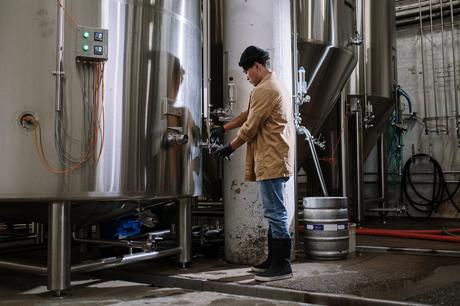
Photo by cottonbro studio on Pexels.com
" data-orig-size="1880,1253" data-image-title="a man in brown jacket" data-orig-file="https://sprbrewcrew.files.wordpress.com/2023/08/pexels-photo-5532998.jpeg" data-image-description="" data-image-meta="{"aperture":"0","credit":"","camera":"","caption":"","created_timestamp":"0","copyright":"","focal_length":"0","iso":"0","shutter_speed":"0","title":"","orientation":"0"}" data-medium-file="https://sprbrewcrew.files.wordpress.com/2023/08/pexels-photo-5532998.jpeg?w=300" data-permalink="https://atlbeerguyblog.com/2023/08/16/craft-beers-impact-on-the-economic-resurgence-of-local-communities/pexels-photo-5532998/" alt="" class="wp-image-6683" data-large-file="https://sprbrewcrew.files.wordpress.com/2023/08/pexels-photo-5532998.jpeg?w=645" />Photo by cottonbro studio on Pexels.comIn recent decades, the craft beer industry has experienced a meteoric rise, not only in terms of its popularity among consumers but also in its significant economic impact on local communities. Craft beer, often characterized by its small-scale production, innovative flavors, and close ties to the community, has become a catalyst for economic growth, job creation, and tourism. This article delves into the multifaceted ways in which craft beer has revitalized local economies, citing specific occurrences from various regions.
Craft Beer’s Economic Contribution
Craft breweries have emerged as a powerful force in bolstering local economies. These establishments, often independently owned, inject capital directly into their communities through various channels. The first notable impact comes from job creation. Craft breweries require a diverse range of skills, from brewing and packaging to marketing and distribution. As a result, they generate employment opportunities for local residents.
One prime example of this can be seen in Asheville, North Carolina. This city, nestled in the Appalachian Mountains, has earned the moniker “Beer City, USA” due to its thriving craft beer scene. In 2018, the Brewers Association reported that Asheville’s craft beer industry supported more than 3,000 jobs, contributing significantly to the local workforce. This employment surge extends beyond the brewery walls, as the demand for local ingredients like hops and malt has prompted growth in the agricultural sector as well.
Craft Beer Tourism
The allure of unique, locally brewed beer has transformed craft breweries into tourist magnets. Enthusiasts often embark on beer-centric vacations, known as “beercations,” to explore the flavors of different regions. This trend has the potential to significantly boost local economies, as visitors spend money on accommodations, dining, entertainment, and, of course, craft beer.
One of the most iconic examples of craft beer tourism is Portland, Oregon. This city has gained international recognition for its craft beer scene, drawing aficionados from around the world. The Oregon Brewers Festival, one of the oldest of its kind, attracts tens of thousands of visitors each year, infusing the local economy with millions of dollars. Breweries and beer-related businesses have capitalized on this trend by offering tours, tastings, and merchandise, creating a ripple effect that benefits not only breweries but also the broader community.
Revitalization of Industrial Spaces
Craft breweries often set up shop in formerly neglected industrial spaces, breathing new life into once-vacant buildings. This repurposing of infrastructure not only contributes to the aesthetic improvement of communities but also has a positive economic impact. These breweries transform derelict areas into vibrant hubs of activity, attracting foot traffic and fostering a sense of community.
Detroit, Michigan, serves as an excellent case study in this regard. The city, known for its economic challenges, has witnessed the emergence of numerous craft breweries that have revitalized forgotten neighborhoods. One such instance is the “Eastern Market Brewing Co.,” which found its home in a historic building within Detroit’s Eastern Market district. This brewery’s presence has helped catalyze a resurgence in the area, with increased foot traffic benefiting local businesses and artisans alike.
Local Supply Chain Support
Craft breweries often prioritize local sourcing of ingredients, creating a symbiotic relationship with nearby agricultural producers. This preference for locally grown hops, grains, and other brewing essentials stimulates demand for regional products and fosters collaboration between industries.
The Pacific Northwest region, encompassing states like Washington and Oregon, has embraced this ethos wholeheartedly. The area’s robust hop production aligns perfectly with the craft beer industry’s preferences. Breweries such as Deschutes Brewery in Oregon have been at the forefront of sourcing hops locally, thereby supporting farmers and boosting the regional agricultural economy.
The economic impact of craft beer on local communities cannot be understated. From job creation and tourism to urban revitalization and support for local supply chains, craft breweries have become essential contributors to vibrant local economies. Specific instances from places like Asheville, Portland, Detroit, and the Pacific Northwest highlight the multifaceted ways in which craft beer has breathed new life into communities.
As the craft beer industry continues to evolve and adapt, its role as an economic catalyst remains steadfast. Whether it’s through the creation of jobs, the attraction of tourists, the repurposing of abandoned spaces, or the promotion of local agriculture, craft beer’s impact on local communities is a testament to the power of entrepreneurship, innovation, and community engagement.
